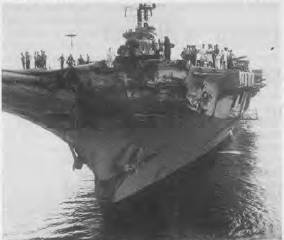- Author
- Lind, L.J.
- Subjects
- History - general
- Tags
-
- RAN Ships
- None noted.
- Publication
- December 1990 edition of the Naval Historical Review (all rights reserved)
Written by L.J. Lind, B.E.M., F.A.I.A., Dip. J. – Foundation President
Beginnings
On 25 May, 1970, the 348th anniversary of the arrival of the first British ship on the Australian coast (the British ship, TRYAL, Captain John Brooke, was wrecked at Eendracht Bay, W.A. on 25 May, 1622), some forty men and women attended a meeting at Garden Island with the common purpose of forming a Naval Historical Society. The meeting was called by the writer with the object of creating an organisation which would improve the image of the Navy in Australia by preserving the history of the service and bringing that history before the public.
This audience was mainly drawn from the workforce of Garden Island Naval Dockyard with a sprinkling of representatives from the Master Attendant’s Branch, the General Overseer’s Branch, Naval Base Headquarters and ships alongside.
The building in which the historic meeting was held has long since been demolished. It was a workers’ amenities building situated on the present road between the Garden Island Museum and the Navy Dental Surgery. Necessity dictated the use of this old building but it is significant that its location was some 50 yards from the sandy saddle where the crew of HMS SIRIUS took possession of the island for the use of the Royal Navy on 11 February, 1788.
RAN Public Image

However, the seed of the Society’s birth was not sown at Garden Island. In October, 1969, just four months after the destroyer USS FRANK E. EVANS was sliced in two by the aircraft carrier HMAS MELBOURNE in the South China Sea, another meeting was held in the old Ball Room at Naval Base Headquarters, Potts Point. This meeting was convened to discuss ways and means of improving the Royal Australian Navy’s public image.
At the time, my temporary office was in the old Ball Room. Some weeks previous I had been seconded from Garden Island as Special Public Relations Officer for the Captain Cook Bicentennial Celebrations and I was invited to attend the meeting.
In 1969 the Royal Australian Navy had reached the low point in its popularity since its formation in 1911. Two collisions at sea which resulted in the loss of two ships and many lives, participation in an unpopular war in Vietnam, the bitterness and acrimony engendered by courts martial, Royal Commissions and Parliamentary debates together with continuous attacks by a hostile press had eroded morale and drained the spirit of a once proud service.
Against this drab background the meeting found it difficult to arrive at any palliative action. My one suggestion, to form a Naval Historical Society, met with little enthusiasm but it was agreed that nothing could be lost by pursuing the idea providing it did not incur the use of Navy funds.
Fortunately, I had considerable experience with historical societies and at the time was Vice President of the very active and successful Lane Cove Historical Society. I decided, in view of the dearth of ideas to originate from the meeting, to proceed with the proposition.
Foundation Meeting
My foundation address dwelt on the proud record of the Royal Australian Navy in two world wars, Korea, Malaya and Vietnam. It also touched on the Navy’s great contribution to the discovery, charting and settling of Australia and its spontaneous reaction to national catastrophes. I also emphasised that the new Society must give priority to the publication of this record in newspapers and magazines to promote this image. The contents of this address provided the aims and objects which remain unchanged in the Society’s constitution today.
It may surprise many members to learn that the Society was initially named the Garden Island Naval Historical Society. This name was suggested by the General Manager of Garden Island Dockyard, Rear Admiral B.W. Mussared under whose auspices the meeting was held. He reasoned it would be necessary to have a Society in being before approval could be obtained from the Naval Board for an official Naval Historical Society. The foundation meeting lasted exactly forty minutes. (This was the official lunch break in the dockyard.) In this period motions were carried to form the Society, a set of rules for the conduct of all aspects of Society business, the basis of a constitution, annual subscriptions ($1.00 per annum and $10.00 for Life Subscription) and the election of officers. Our Foundation Committee was: President Mr L.J. Lind, BEM, FAIA, Dip.J., Vice Presidents Messrs. M.A. (Alan) Payne and Gavin Cashman, Secretary Mr Graham Muir, Treasurer Mr W. Martin and Committee Commander George Knox, RAN (Ret.), Lieutenant Commander Peter Churchill, RN (Ret.), Lieutenant Ron Atwill, DSM, RN (Ret.), Mr W. Martin, Miss Barbara White and Mr Howard Horwood.




